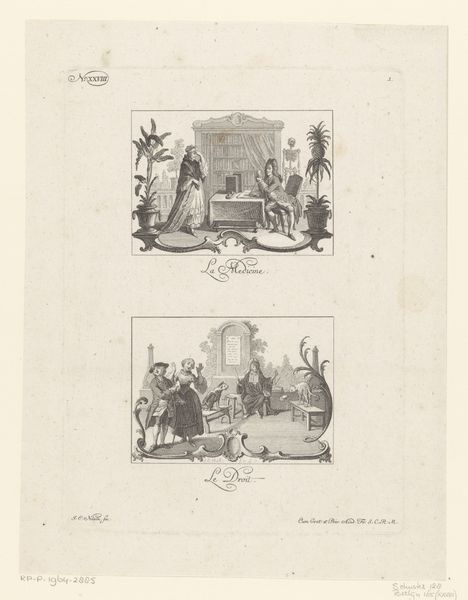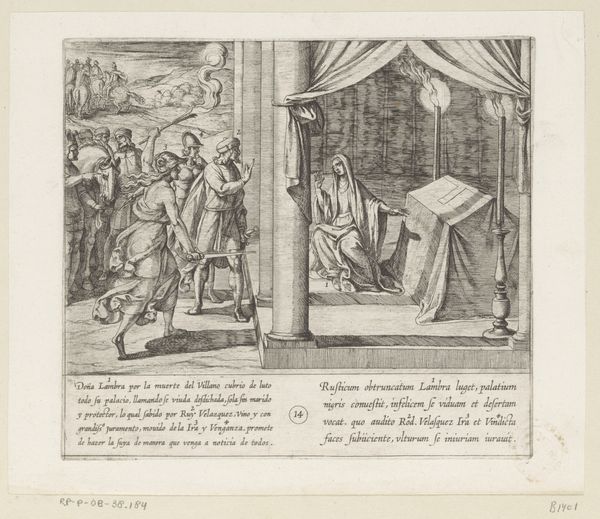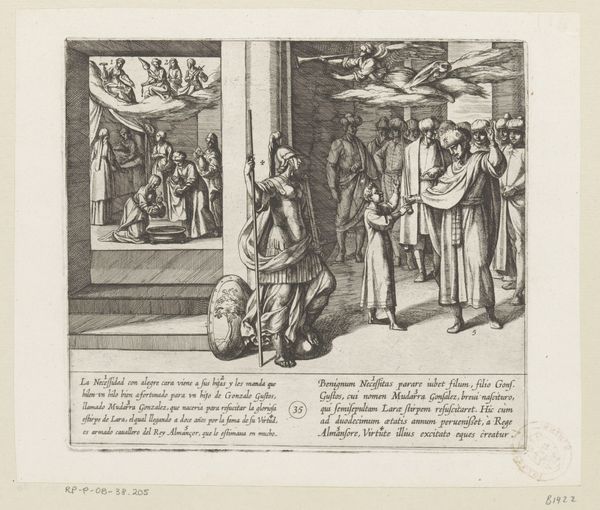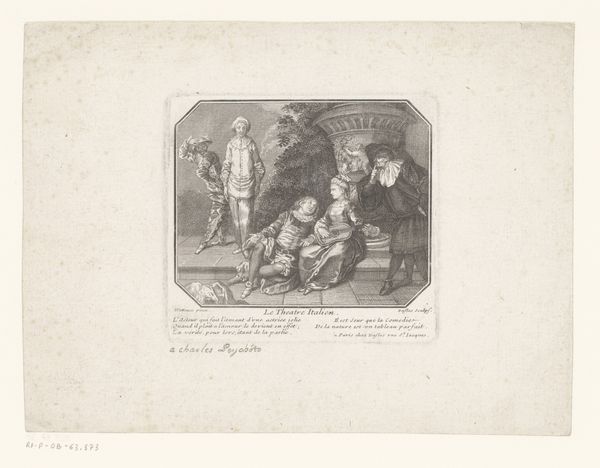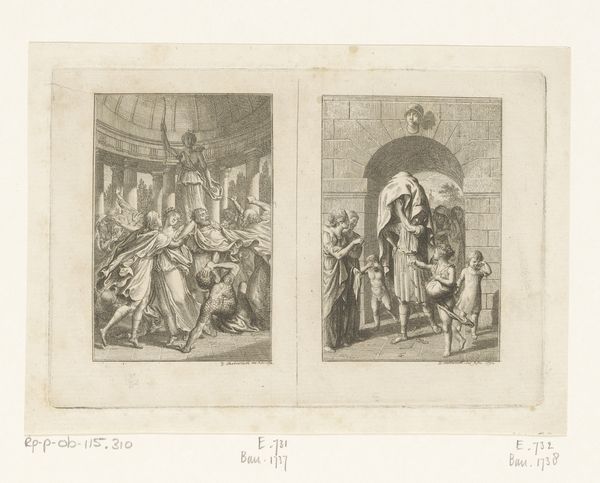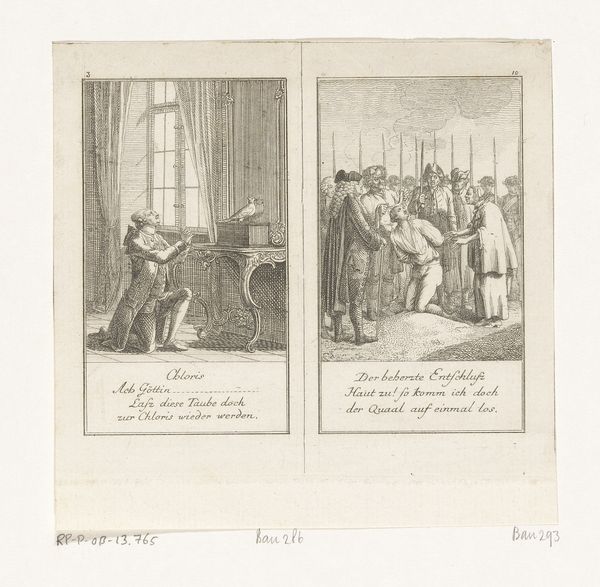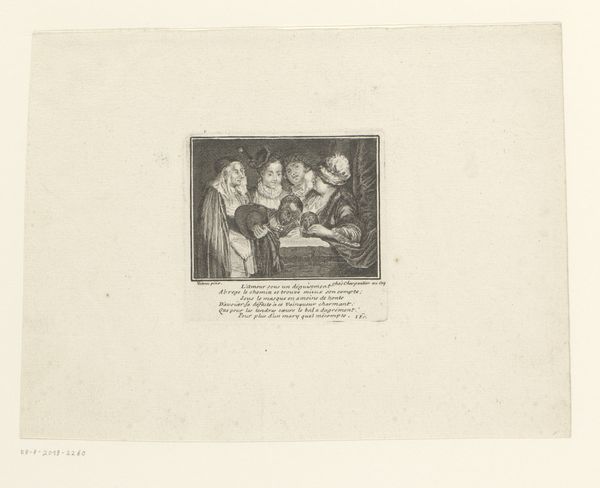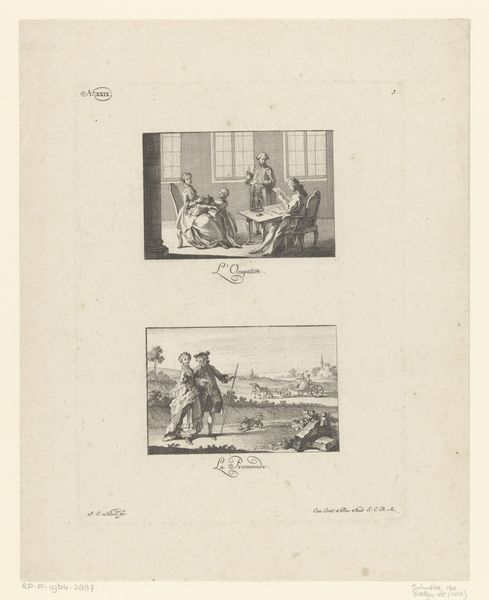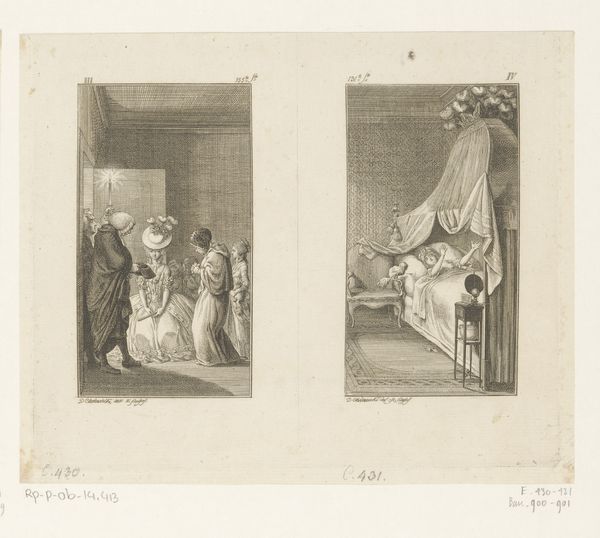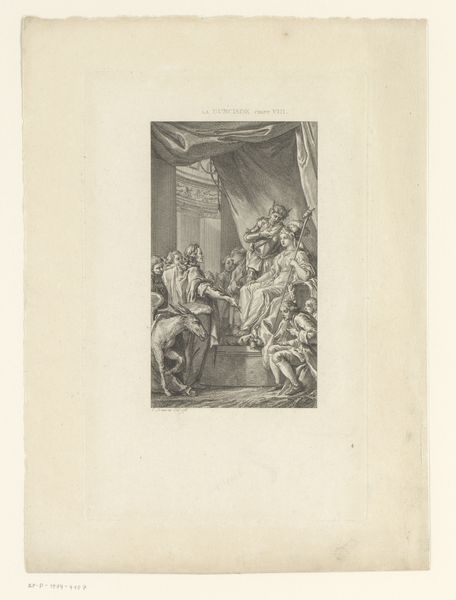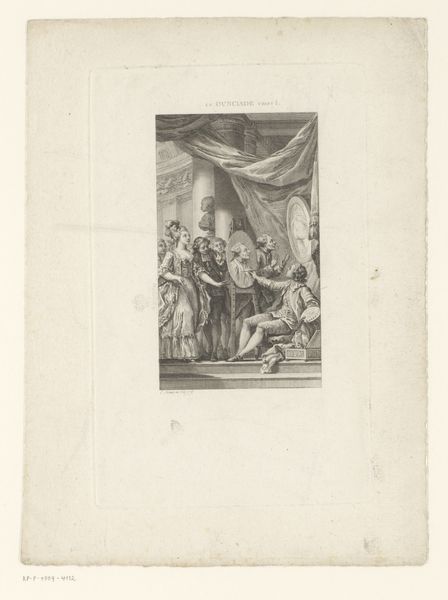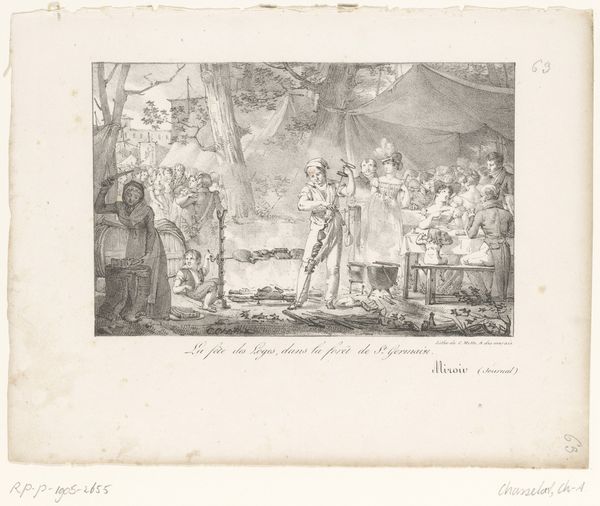
Dimensions: height 189 mm, width 205 mm
Copyright: Rijks Museum: Open Domain
Curator: Daniel Nikolaus Chodowiecki’s print, “Twee scènes uit Sebaldus Nothanker,” created in 1773, offers us two distinct vignettes rendered in delicate engraving. The work currently resides here at the Rijksmuseum. Editor: You know, immediately I'm struck by the intimacy despite the scale. It’s like peering into someone's memory or a half-forgotten story. The scratchy lines give it an antique, almost fragile feel, doesn’t it? Curator: It does indeed. Chodowiecki's Rococo style captured contemporary social life and, significantly, moral and philosophical themes. The piece engages with questions of social justice, piety, and personal conduct which are quite relevant. Editor: Justice, eh? I’m getting more of a quiet melancholy vibe, especially from that bedside scene. All those solemn faces… Makes you wonder what the story is. Curator: The scenes illustrate passages from Christian Friedrich Wezel's novel. The left frame presents a public moment of soldiers confronting a family at the front door of a humble abode, and it might speak to broader themes of state authority versus domestic life, of individual versus collective, particularly under pressure. Editor: Absolutely, and I’m picking up what you’re laying down about moral conduct too! Look at the people, some anxious and guilty while the other scene captures, presumably, the resolution: a reflective, more subdued environment centered on a sick bed. There is something haunting. Curator: Precisely! The juxtaposition is crucial. One scene plays on external conflict, power dynamics, whilst the other internal struggles and grief—key contrasts. We see elements of genre-painting combined with an implicit social commentary on morality within 18th-century society. Editor: And that interplay, for me, highlights the universality. You could lift this right out of 18th-century Prussia and drop it into our time; the underlying tensions would still resonate. It’s about human drama. I love that sense of accessibility despite it being a historical piece. Curator: A poignant reflection! Understanding the contexts through literary narrative definitely enriched how we see Chodowiecki’s creation—perhaps inviting a deeper, layered appreciation? Editor: Absolutely. Art history sheds some light on social issues. And now I think, beyond aesthetics and composition, this little etching is a tiny, vibrating time capsule—which has been so fascinating to discover.
Comments
No comments
Be the first to comment and join the conversation on the ultimate creative platform.
